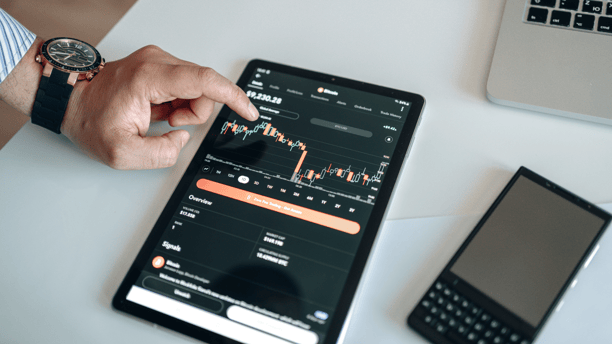
In the past, traditional businesses relied on their gut and intuition to make decisions. Today, they are using big data to inform those decisions and make them more accurate.
Big data is changing how people do business and it’s moving faster than ever. It's not just that big data allows you to make better decisions; it's that it allows you to make those decisions faster.
When it comes to e-commerce, the ability to make decisions faster is the difference between being first out of the gate and being left behind by your competitors.
In this article, take a look at the following eight ways big data is changing e-commerce today—and how you can use it to your advantage if you're looking for an edge over your competitors and be more successful in your business:
- Personalisation
- Improved advertising
- Predictive analytics
- Smarter targeting
- Data visualisation
- Better customer service
- Cloud computing
- Faster shipping
1. Personalisation
Personalisation is one of the ways big data can be used to improve e-commerce websites. Personalised content attracts visitors and motivates them to buy things online. It also increases conversions because people feel like they're being heard when they receive content tailored specifically for them.
So how can you use big data to personalise your marketing efforts? Here are three ways:
- Use behavioural signals to personalize content
- Customise product recommendations based on purchase history and behaviour
- Make email messages more relevant by segmenting customers.
The power of personalisation is a concept previously introduced by marketers. Still, it has recently gained momentum as consumers have become more accustomed to customizing their online experiences. In fact, according to a recent survey from Demandware and Nielsen, nearly 80% of consumers say they prefer personalised recommendations over generic ones.
To provide this to your customers, you need to collect data from different sources from enterprise databases to social media and analyse it. If you resort to elasticsearch consulting, you will learn more about enterprise search software. This solution and similar ones help you achieve better personalisation.

2. Improved advertising
In the past, businesses used to advertise their products based on what they thought their customers wanted. They would make assumptions about what people wanted and then try to sell it to them. This method was ineffective because it needed to consider what people needed or wanted.
Nowadays, businesses are using big data to make more effective decisions about what products they should sell and how they should sell them. They can use advanced analytics programs to determine exactly what products will appeal to their customers and how best to sell them.
Businesses can now offer a much better customer experience with less wasted effort than ever before.
In a recent article on Business2Community, online marketing expert Jeff Bullas explains how big data makes advertising more effective. He cites five key factors that are helping advertisers improve their results:
Improved Targeting: Targeted ads can be very effective at driving sales. This is especially true for e-commerce sites where consumers are already looking for products they want to buy. Using big data and other analytics tools, marketers can identify specific groups of consumers who are likely to respond to a given ad campaign. This allows them to target their most profitable audience rather than wasting money on people who won't buy anything anyway;
Insightful advertising: The data collected by your website can be used to target ads more accurately so that they're relevant to each customer. This means you'll get higher click-through rates, more sales, and more satisfied customers;
More personalised messaging: Big data allows advertisers to learn more about their customers than ever — including what they like, what they don't like, and even how they think. This will enable them to create more personalised messages that resonate with their consumers' needs and interests better than ever before. It also makes it easier for them to test different messaging approaches until they find one that works best for each group of customers or even individuals;
Better conversion rates: Through better targeting, you'll also see better conversion rates on your ads. This means more sales per click and fewer wasted efforts on ineffective ads;
More effective campaigns: With insightful advertising and better conversion rates, you'll be able to run more effective campaigns at lower costs.
3. Predictive analytics
As a retailer, you have a fortune of data at your disposal. From customer shopping patterns and preferences to inventory levels, you can use this information to make informed decisions about running your business.
Predictive analytics is one of the most valuable tools that can help you do this. It allows companies to make better decisions using past data to predict future behaviour.
But also, when it comes to understanding market fluctuations, using a supply and demand graph can provide a clear visual representation of the forces influencing your business, helping you to identify trends, anticipate changes, and make informed decisions about pricing, inventory management, and overall strategy.
Companies primarily use predictive analytics to improve customer service and identify sales opportunities.
It works by examining large amounts of data and identifying trends or patterns that can be used to predict what will happen in the future based on what has happened in the past. This allows companies to make informed decisions about inventory levels or staffing needs based on historical data rather than guesswork or gut instinct alone.
Predictive analytics allows companies to predict what customers will buy and when. This will enable them to spend more time focusing on those potential buyers rather than spending time and money trying to attract new customers who may not be interested in their products.
It can be used to identify potential customers and target them before they even know they need your product or service. This is a great way to increase sales because it takes the guesswork out of marketing campaigns and makes them more effective.
Predictive analytics is hard for any business to do without. It plays a major role not only in e-commerce but also in educational projects and even in crypto bot work. It is a great helper in every field that may come into contact with big data.

4. Smarter targeting
Targeted advertising is one of the ways that big data is changing e-commerce. It's no longer enough to advertise to everyone who visits your site or app. You need to know exactly who you're trying to reach and how you should reach them.
One of the biggest challenges in targeted advertising has been social media. The problem was that social networks were walled gardens, so advertisers couldn't get inside to target users with ads based on their interests. Advertisers had to rely on keywords, which meant that brands were wasting money targeting people who didn't care about their products or services.
But now, social media companies are opening up their platforms so that advertisers can target users based on more than just keywords. They can look at user interests and demographics and what content they're consuming on each platform which means they can show ads for something similar from another company.
Thus, advertisers can be much more efficient with their ad dollars by focusing on users interested in their products rather than throwing everything out there and hoping for the best.
5. Data visualization
Big data is changing e-commerce in many ways. One of the most important and useful changes is to make data more accessible and easier to analyze.
Data visualization uses charts, graphs, maps, and other methods. It's a powerful tool for gaining insights into how your business operates and how it can improve its performance.
Data visualization helps you quickly identify patterns in your data and relationships between different variables. It allows you to explore complex data sets without requiring specialized knowledge or training in statistics or computational science.
Here are three ways big data will change e-commerce through data visualization:
- Analyzing customer behaviour patterns;
- Making better decisions about inventory management and product placement;
- Creating new products based on customer preferences.
6. Better customer service
Companies are using big data to create more effective customer service models, which leads to happier customers and a better bottom line.
.png?width=612&height=344&name=Blog%20visuals%20(12).png)
By leveraging the combined power of observability and AIOps, companies that have adopted big data into their customer service models have seen some impressive results. Companies that have adopted big data into their customer service models have seen some impressive results. For example, one study found that companies that used big data to improve customer interaction had an average increase of 18% in customer satisfaction and loyalty. In contrast, those who didn't use big data saw only a 7% increase in these areas.
This difference is because big data allows companies to understand their customers better. This means understanding what drives them to purchase certain products and how they want to interact with brands online and offline. This allows companies to tailor their marketing campaigns to fit each consumer's needs, resulting in higher conversion rates for sales and lower costs per sale overall.
7. Cloud computing
Cloud computing is Internet-based computing that provides shared resources, software, and information to computers and other devices on demand.
While it may sound like a fancy buzzword, cloud computing is actually quite simple. It refers to using remote servers hosted by a third party to store and process your data as opposed to using your own physical servers at your business location.
This can be beneficial for small businesses because it allows them to take advantage of the economies of scale from larger companies, which means they can get more power at a lower cost than if they were trying to provide their own infrastructure or server space. It also allows them to focus on their core competencies instead of worrying about buying expensive hardware and maintaining it properly.
The cloud is a huge change for e-commerce. Large companies have been using the cloud to manage their data for years, but it's only recently that smaller businesses have had access to this technology.
The cloud allows companies to store their data in one central location so that they can access it from any computer or mobile device. This means that you don't have to worry about backing up your data on multiple devices or having enough space on your computer for storage — everything is hosted by the cloud provider and stored securely off-site.
As a result of this convenience, more and more businesses are moving their digital platforms into the cloud. It's not just large corporations; many small businesses are also making the switch with their digital platform development because it saves them time and money in the long run.
This allows companies to tailor their marketing campaigns to fit each consumer's needs, resulting in higher conversion rates for sales and lower costs per sale overall. Also, customer service and communication are greatly improved thanks to cloud contact centre software integrations.

8. Faster shipping
Using big data to predict demand has improved warehouse productivity and accelerated the speed at which companies can ship products from their warehouses. Once a retailer knows that a particular product will be in high demand, it can be shipped directly from a warehouse to a customer’s home or office before it even goes on sale.
This allows online shoppers to receive their purchases more quickly than ever before and helps stores cut down on additional costs associated with holding inventory in stores or warehouses.
In addition, big data can also help retailers and manufacturers get better at predicting what products customers want next. For example, if you buy one pair of shoes, maybe you’ll buy another one later on down the line. This concept is known as the repurchase rate, which many retailers are trying to take advantage of today.
An example is Amazon. Amazon has been working on getting items to customers faster and faster, as evidenced by its recent announcement that Prime Now customers will be able to get free two-hour delivery in New York City. The company also recently rolled out its Prime Now subscription service, which allows members to get unlimited free two-hour deliveries for $99 per year.
And it's not just Amazon that's pushing for faster shipping times. Nordstrom has announced recently that it would offer same-day delivery by partnering with Instacart, an online grocery delivery service. And Walmart launched ShippingPass in June, which offers two-day shipping for a flat rate of $49 per year.
Conclusion
The role of big data in e-commerce is growing every day. When you're thinking about what to sell, how to sell it, and whom to sell it to, remember to consider the possibilities that big data provides.
It is creating new opportunities and challenges for e-commerce. While it's still early, and people are only beginning to see what the full potential of big data can be, it's clear that there are many ways that it is changing e-commerce.
In the end, big data is not just changing e-commerce—it's changing the way people live. If you're looking to grow your e-commerce business, big data can help you do it.
Author bio:
Dmytro Sokhach is an entrepreneur and a 6-Figure Flipper Club member. Founded Admix Global (web agency) that builds websites, makes them profitable and sells them as a business.